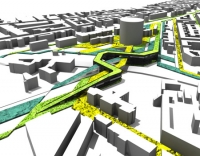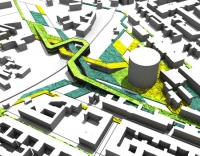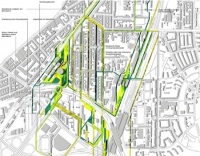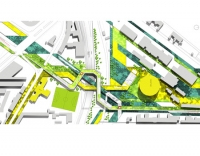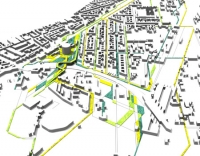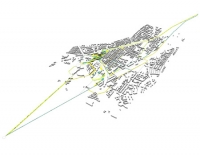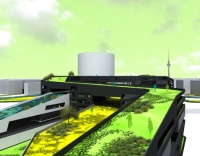Urban Braiding
"Braided Urbanism, Berlin SĂĽdkreuz".
Urban barriers surround the project site. From the west it touches the railway to Potsdam, in the east the railway to Dresden and towards south runs the Bundesautobahn 100. The existing urban connectors like bridges and tunnels are not sufficient enough to bond the area to its neighboured boroughs. The result therefore is an island condition. The target of the competition was to connect the site with its surrounding neighbours, the Potsdamer Platz in the north and the Schöneberger Südgelände in the south by using the figure of the Schöneberger loop. The intention of this loop is to be used as a walkway for pedestrians, runners and skaters.
Looking closer into the programmatic content of the site, one can identify existing potential points of attraction. There are areas with characters of fitness, characters of leisure and areas with character of culture. Pitches and sports facilities, the GASAG site with its gasometre, the new railway station and the vast fields of private gardens are just a few examples. The programmatic strategy of this proposal conceives to create with the programmatic content of culture, sports and recreation in combination with urban green a new typology of park/ landscape in the city. This has the potential to create a new identity for the entire area and will bond people to the neighbourhood. Furthermore it will attract people from other parts of the city as well.
The proposal uses the concept of braiding as a formal technique to stitch and bond it to its neighbouring boroughs. The technique uses the primary existing urban fabric and the system of the Schöneberger loop as a reference system to connect existing points of attraction. Through this process a new urban fabric emerges. The threads create field conditions that will be activated with the intended program of leisure sports and culture. The braided system of the three programs creates an urban guidance system and results in an urban landscape park. People, who will be attracted by this network of connectivity for doing sports for example can run, skate, walk on specific walkways and can use on the one hand the existing facilities and on the other hand new facilities along the way.
Project Title: “Urban Braiding”
Location: Berlin, Germany
Design year: 2007
Type: Competition entry
Â
Â
Â
